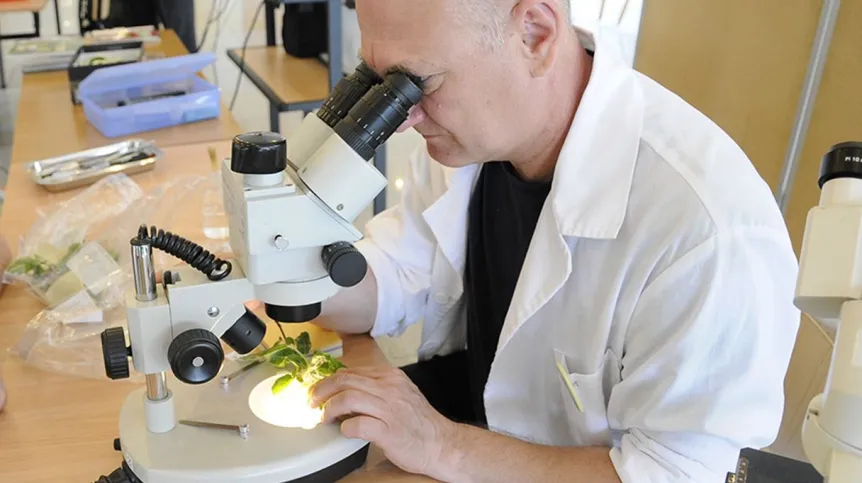
Scientists from the Wrocław University of Environmental and Life Sciences have sent the common fungi of the species Fusarium culmorum into space. They want to see how the fungi will behave in absence of gravity. If they survive, the researchers will send a satellite with larger organisms into space.
The research is carried out by a consortium of SatRevolution, the Wrocław University of Environmental and Life Sciences, the Wrocław University of Technology, the Wroclaw Medical University and the Hirszfeld Institute of Immunology and Experimental Therapy PAS.
According to the press Wrocław University of Environmental and Life Sciences spokesperson Małgorzata Moczulska, the Polish bio-nanosatellite built by the consortium is already in space. 'Our science satellite was launched as part of a SpaceX orbital mission aboard Falcon 9 that took off from SLC-40 at Cape Canaveral in Florida on January 13, 2022. The flight was successful. 105 objects were transported into orbit, including four SatRevolution modules', she reports.
'The cooperation on the project is particularly interdisciplinary because we are trying to connect the worlds of cell biology and sophisticated technologies', says Professor Anna Chełmońska-Soyta, Vice-Rector of the Wrocław University of Environmental and Life Sciences.
The team from the Wrocław University of Science and Technology was responsible for the construction of laboratory modules that will enable various biological and medical tests. Researchers from the Medical University of Wroclaw will investigate how microgravity and cosmic radiation affect the action of specific cancer drugs and how these factors can affect human health. Research on the behaviour of cosmopolitan fungi will be carried out by researchers from the Wrocław University of Environmental and Life Sciences.
They sent a common Earth fungus Fusarium culmorum into space. It is found in the air, plants, soil and residential buildings. It develops in various temperatures and humidity conditions.
Scientists emphasize that Fusarium culmorum is a convenient species for this purpose, as it spores and grows quickly. 'Importantly, its structures are contrasting enough to assess the development using miniaturized optical systems placed in a small cultivation on a satellite', they add. This species is also relatively resistant to temporary temperature changes.
'We know that this species can withstand temperatures as low as minus 250 degrees Celsius. We have tested it on Earth. We want to see if it will also function in space, in a specific microgravity, which is many times lower than the gravity on Earth', explains Professor Krzysztof Matkowski from the Department of Phytopathology and Mycology, Wrocław University of Environmental and Life Sciences.
The scientists want to check whether such conditions will affect the biology of the fungus. They point out that this knowledge is important in the context of future attempts to create self-sufficient human bases in space. Fungi are the precursors of life in any ecosystem and without them intensive, long-term growth of plants is impossible.
'We are driven by curiosity whether in conditions much different than those on Earth, this organism will develop in the same way, or maybe differently, or perhaps in a completely incomprehensible and strange manner', adds Matkowski. He emphasises that if in the future scientists send a satellite with larger organisms into space, this research will provide them with the necessary knowledge about the possibilities of their development.
The research in space will be conducted for approximately two weeks, with a possible extension. After the experiment is completed, the satellite will burn in the Earth's atmosphere. (PAP)
Author: Agata Tomczyńska
ato/ ekr/ kap/
tr. RL













